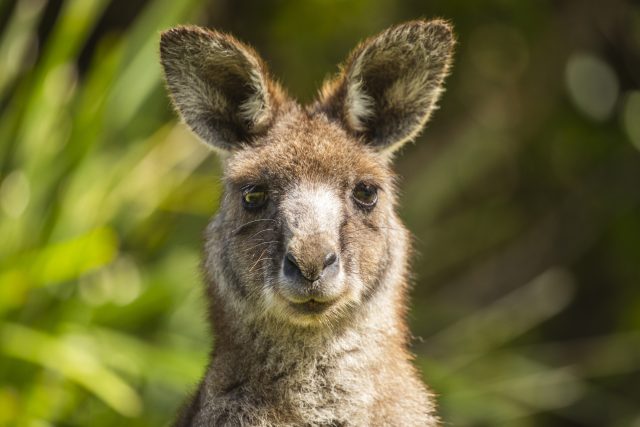It’s all change for Australian wine in 2024
This year could prove to be a watershed moment for the Australian wine industry with “transformational acquisitions” rumoured to be afoot.

Australia’s wine industry is poised to look considerably different in 12 months’ time.
Revenues in the sector, which directly employs more than 18,000 people, have declined at a combined annal rate of -6.3% over the past five years, and stood at an estimated AU$6.3bn (£3.4 billion) at the end of last year, according to an IbisWorld report.
The AU$1.3 billion-per-year China export market collapsed when Beijing slapped punitive tariffs on Australian wine in late 2020, and while China is expected to soon remove – or at least modify – those impositions, the industry faces much changed global conditions.
Re-establishing Australian wines in the People’s Republic will not be achieved rapidly or easily.
In the past three years Chinese tastes have swung away from commodity wines towards spirits, although premium wines such as Treasury Wine Estates’ Penfolds range remain highly prized.
Furthermore, producers from Chile, Argentina, South Africa and Europe have filled the vacuum created on shelves by the absence of Australian wines and will provide greater competition once the tariff barriers are lifted.
Globally consumers have moved away from commodity bottles in favour of premium priced labels and Wine Australia calculates that the industry has surplus stocks of more than two million wine bottles.
Limited stocks of the finest wines have found new demand in expanding alternative South-East Asian markets such as Vietnam, and brand owners will be careful not to undermine that growth by diverting limited stocks back to China.
At the same time, home market demand has been declining for the past four years in Australia and is forecast to reach 445 million litres this year compared with a 10-year average of 480 million litres. Prices have increased only marginally since 2019.
At 822,000 tonnes the 2023 “crush” was the lowest for several years but the average price per tonne paid to vineyards fell by 11.5% on 2022 at A$357.
These factors have put the Australian wine industry into crisis.

Change is coming
Wine Australia says there are an estimated 6,000 growers employing 163,790 full and part-time employees across 65 winegrowing regions, contributing over AU$45 billion annually to the Australian economy.
Economic forces are generating change as many growers, whose vines are an adjunct to other agricultural interests, were already at the margins of survival.
Partner Content
The 2,100 wineries are also reducing in number with the bigger producers rationalising their facilities.
For instance, last autumn Penfolds owner Treasury Wine Estates announced the closure of its Karadoc winery in Victoria, a “last resort” decision triggered by rising costs and a decline in commercial wine consumption.
Production of 19 Crimes, Lindeman’s, Wolf Blass, and Yellowglen will be transferred after the coming harvest to alternative TWE sites.
But it is at the top end of the production and distribution pyramid that most change is expected.
KPMG partner Tim Mableson told the Australian Financial Review at the start of this year that he expects “transformational acquisitions” to take place this year as the wine market consolidates.
Treasury has already conducted a root-and-branch pruning of its operations to concentrate on premium priced bottles for global markets. The recent AU$41.6 billion deal to buy California’s Daou Vineyards is part of that strategy.
Meanwhile, Accolade, the second biggest player in Australian Wines, is struggling under a mountain of debt, including AU$572 million due in June 2025 and an AU$150 million revolving credit facility maturing this year.
US private equity house Carlyle bought Accolade Carlyle, acquired for about AU$$1 billion in 2018, but it is about to pull out.
Ownership of the group which includes brands Hardy’s, Croser and Banrock Station, is about to pass to Bain Special Situations and London-based Sona Asset Management, two specialists in distressed assets, through a debt restructuring.
“Accolade remains in constructive talks with its lenders,” a spokesman said. “The goal of all parties is for Accolade to emerge as a strong business, with a restructured balance sheet that will allow it to deliver continued success in its key markets.”
Market rumours in Sydney suggest that Bain and Soma are also looking closely at the antipodean wine assets of Pernod Ricard, which include the Jacob’s Creek brand.
The French giant moved into the sector in 1989 when it bought Jacob’s Creek and St Hugo but with constant pressure to improve returns on funds invested it is said to wish to finalise a sales process by the end of March.
Australian Vintage, owner of the McGuigan and Tempus Two brands, is expected to outline the outcome of its strategic review when it announces its first half results next month.
At the AGM in November, Australian Vintage chairman Richard Davis told shareholders that the company had cut its costs and increased market share and was not in the same difficulties as its rivals.
It “did not require a strategic transaction to support our future profitability,” he said.
Related news
Ricky Gervais demands Barossa red on his tour rider




